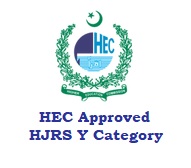Remote sensing analysis of unnamed crater in Eastern Australia
DOI:
https://doi.org/10.47264/idea.nasij/2.1.1Keywords:
Australia, Winton, impact crater, geology, geophysics, remote sensing, bouguerAbstract
Remote sensing (RS) can certainly provide deep insights about detecting the terrestrial structure of unknown origin. In this paper, we also detected impact crater of unknown origin in northeast Australia by RS techniques, specifically to enhance the credibility of scientific database on the possible impact craters in the continent of Australia. Following the RS procedures, a circular-shaped unnamed crater, hereafter the Winton crater, was detected with a diameter of approximately 130-km. Furthermore, the topographical parameter was obtained from RS data, which showed that the area, depth and volume of the crater are ~100-m2, ~130-m and ~99.8-m3, respectively. The geological data revealed that inside the crater, the outcrops are mainly consisted of sedimentary and low grade metamorphic rock, specifically included the mixed sediments and conglomerates, limestone and siltstone of the Craterous period. However, the exterior of the circular shaped in the southern part is consisted of unconsolidated deposits of the Tertiary period. The positive value of gravity anomaly for the major part of the crater is 3000 mGal and Bouguer gravity onshore grid has an anomaly of 900 mGal over the impact crater. It showed that the Winton crater could not be the due to any volcanic or karstic processes. On the other hand, a detailed field and petrology investigation should need to distinguish the origin of the crater of old and fossil travertine or an impact crater.
References
Atlas of living Australia. (n.d). Spatial Layers. http://spatial.ala.org.au/layers
Blair R.W. Jr. (1986) Karst landforms and lakes. In N. M. Short Sr. & R. W. Blair Jr. (Eds.), Geomorphology from space: A global overview of regional landforms (pp. 402–446). Washington DC: NASA Special Publication (SP–486)
Buchner, E., & Kenkmann, T. (2008). Upheaval Dome, Utah, USA: Impact origin confirmed. Geology, 36(3), 227-230. https://doi.org/10.1130/G24287A.1
Earth Explorer. (nd). USGS. https://earthexplorer.usgs.gov/
Folco, L., Di Martino, M., El Barkooky, A., D'Orazio, M., Lethy, A., Urbini, S., ... & El Sharkawi, M. (2010). The kamil crater in Egypt. Science, 329(5993), 804-804. https://science.sciencemag.org/content/329/5993/804.abstract
Folco, L., Di Martino, M., El Barkooky, A., D'Orazio, M., Lethy, A., Urbini, S., ... & El Sharkawi, M. (2011). Kamil Crater (Egypt): Ground truth for small-scale meteorite impacts on Earth. Geology, 39(2), 179-182. https://doi.org/10.1130/G31624.1
French, B. M. (1998). Traces of catastrophe: A handbook of shock-metamorphic effects in terrestrial meteorite impact structures. Lunar and Planetary Institute.
French, B. M., & Koeberl, C. (2010). The convincing identification of terrestrial meteorite impact structures: What works, what doesn't, and why. Earth-Science Reviews, 98(1-2), 123-170. https://doi.org/10.1016/j.earscirev.2009.10.009
Gad, S., & Kusky, T. (2006). Lithological mapping in the Eastern Desert of Egypt, the Barramiya area, using Landsat thematic mapper (TM). Journal of African Earth Sciences, 44(2), 196-202. https://doi.org/10.1016/j.jafrearsci.2005.10.014
Garvin, J. B., Schnetzler, C. C., & Grieve, R. A. (1992). Characteristics of large terrestrial impact structures as revealed by remote sensing studies. Tectonophysics, 216(1-2), 45-62. https://doi.org/10.1016/0040-1951(92)90155-Y
Glikson, A., Korsch, R. J., & Milligan, P. (2016). The Diamantina river ring feature, Winton region, Western Queensland. Australian Journal of Earth Sciences, 63(5), 653-663. https://doi.org/10.1080/08120099.2016.1220978
Grieve, R. A. (2005). Economic natural resource deposits at terrestrial impact structures. Geological Society, London, Special Publications, 248(1), 1-29. https://doi.org/10.1144/GSL.SP.2005.248.01.01
Heinrichs, T., Salameh, E., & Khouri, H. (2014). The Waqf as Suwwan crater, Eastern Desert of Jordan: Aspects of the deep structure of an oblique impact from reflection seismic and gravity data. International Journal of Earth Sciences, 103(1), 233-252. https://link.springer.com/article/10.1007/s00531-013-0930-4
Hijmans, R. J., Cameron, S. E., Parra, J. L., Jones, P. G., & Jarvis, A. (2005). Very high resolution interpolated climate surfaces for global land areas. International Journal of Climatology: A Journal of the Royal Meteorological Society, 25(15), 1965-1978. https://doi.org/10.1002/joc.1276
Koeberl, C. (2004). Remote sensing studies of impact craters: How to be sure? Comptes Rendus Geoscience, 336(11), 959-961. https://citeseerx.ist.psu.edu/viewdoc/download?doi=10.1.1.463.4948&rep=rep1&type=pdf
Koeberl, C., Reimold, W. U. (2005). Bosumtwi impact crater, Ghana (West Africa): An updated and revised geological map, with explanations. Jahrbuch der Geologischen Bundesanstalt.
Mars, J. C., & Rowan, L. C. (2011). ASTER spectral analysis and lithologic mapping of the Khanneshin carbonatite volcano, Afghanistan. Geosphere, 7(1), 276-289. https://doi.org/10.1130/GES00630.1
Daneshvar, M. R. M., & Bagherzadeh, A. (2013). Geomorphological investigation of possible impact evidences for the crater-shaped structure of Zirouki in Samsour Desert, SE Iran. Earth Science Informatics, 6(4), 241-252. https://link.springer.com/article/10.1007%2Fs12145-013-0125-3
Paillou, P., Rosenqvist, A., Malezieux, J. M., Reynard, B., Farr, T., & Heggy, E. (2003). Discovery of a double impact crater in Libya: The astrobleme of Arkenu. Comptes Rendus Geoscience, 335(15), 1059-1069. https://doi.org/10.1016/j.crte.2003.09.008
Paillou, P., El Barkooky, A., Barakat, A., Malezieux, J. M., Reynard, B., Dejax, J., & Heggy, E. (2004). Discovery of the largest impact crater field on Earth in the Gilf Kebir region, Egypt. Comptes Rendus Geoscience, 336(16), 1491-1500. https://doi.org/10.1016/j.crte.2004.09.010
Passchier, C. W., & Williams, P. R. (1989). Proterozoic extensional deformation in the Mount Isa inlier, Queensland, Australia. Geological Magazine, 126(1), 43-53. https://doi.org/10.1017/S0016756800006130
Pati, J. K., & Reimold, W. U. (2007). Impact cratering—Fundamental process in geoscience and planetary science. Journal of Earth System Science, 116(2), 81-98. https://link.springer.com/article/10.1007%2Fs12040-007-0009-3
Pati, J. K., Prakash, K., & Kundu, R. (2009). Terrestrial impact structures and their confirmation: Example from Dhala structure, central India. Earth Science India, 2(3), 289-298. http://www.earthscienceindia.info/pdfupload/tech_pdf-45.pdf
Raymond, O. L., & Retter, A. J. (2010). Surface geology of Australia 1:1,000,000 scale, 2010 edition [Digital Dataset]. Geoscience Australia. https://researchdata.edu.au/surface-geology-australia-2010-edition/340646
Reimold, W. U., Trepmann, C., Simonson, B., Sisodia, M. S., Lashkari, G., & Bhandari, N. (2006). Impact origin of the Ramgarh structure, Rajasthan: Some new evidences. Journal of Geological Society of India (Online archive from Vol 1 to Vol 78), 68 (Special Issue 3), 561-565. http://ischolar.info/index.php/JGSI/article/viewFile/83655/73708
Schmieder, M., Seyfried, H., & Gerel, O. (2013). The circular Uneged Uul structure (East Gobi Basin, Mongolia)–Geomorphic and structural evidence for meteorite impact into an unconsolidated coarse-clastic target? Journal of Asian Earth Sciences, 64(5), 58-76. https://doi.org/10.1016/j.jseaes.2012.11.042
Tucker, R. T. (2014). Stratigraphy, sedimentation and age of the upper cretaceous Winton formation, central-western Queensland, Australia: implications for regional palaeogeography, palaeoenvironments and Gondwanan palaeontology. Doctoral dissertation, James Cook University. https://researchonline.jcu.edu.au/34439/
Wang, J., Cheng, W., Luo, W., Zheng, X., & Zhou, C. (2017). An iterative black top hat transform algorithm for the volume estimation of lunar impact craters. Remote Sensing, 9(9), 952. https://doi.org/10.3390/rs9090952
Wikipedia. (n.d). List of impact craters on earth. https://en.wikipedia.org/wiki/List_of_impact_craters_on_Earth
Wikiwand. (n.d). http://www.wikiwand.com/en/
Wright, S. P., Tornabene, L. L., Ramsey, M. S., Osinski, G. R., & Pierazzo, E. (2013). Remote sensing of impact craters. In Impact cratering: Processes and products (pp. 194-210). Wiley-Blackwell.
Downloads
Published
Issue
Section
License
Copyright (c) 2021 Zahid U. Rahman

This work is licensed under a Creative Commons Attribution-NonCommercial 4.0 International License.
Please click here for details about the Licensing and Copyright policies of NASIJ.








